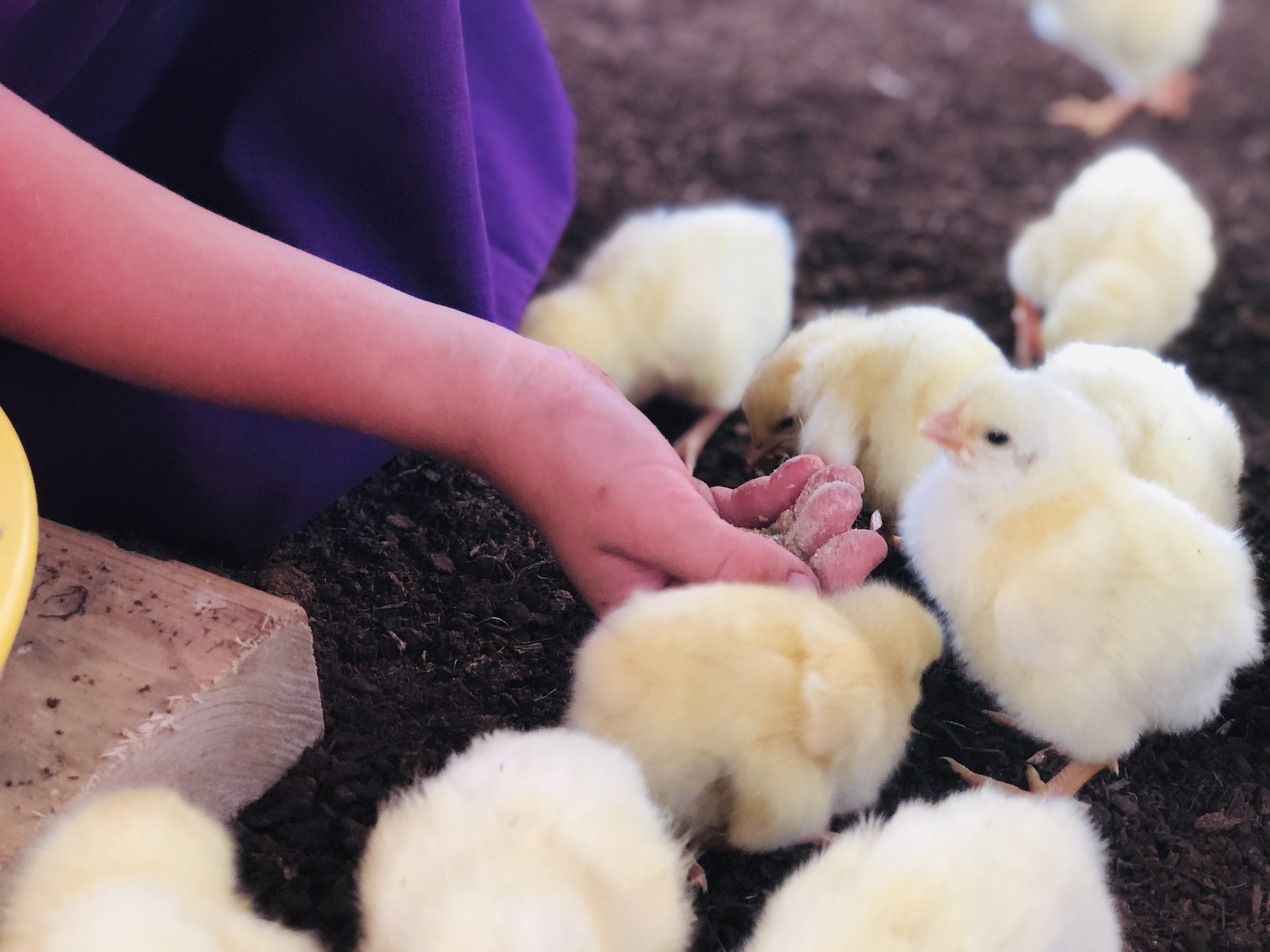How old do you need to be to raise chickens?
posted on
June 5, 2020

I visited the farm last week. It was such a nice change to my family’s “groundhog day” life for the past few months.
I have three little kids, and they reported that the most exciting part of the visit was the chicks. While we were there, the farmer got 500 baby chicks and 150 baby turkey poults. Wow that’s a lot of cuteness!
Farmer Aaron’s kids led my kids in helping unload the chicks and poults from the boxes and gently placing them in the well prepared greenhouse.
The farmer’s sons Ben (11yo) and John (9yo) are raising the chickens this summer.
The farmer gave them some entrepreneurial incentive. They will earn $0.10 per bird that reaches maturity and is processed. If the birds reach 5 lbs in 8 weeks, they get a bonus of $0.01 per bird. And, if the birds reach 6 lbs in 8 weeks, they get a super bonus of $0.05 per bird.
So, let’s do the math. With 500 chicks, that’s the potential to earn $75!
Farmer Aaron knows his kids are ready for the challenge, and that’s why they were passed this responsibility. It’s parent intuition.
The boys were the ones who readied the greenhouse. They laid a bed of peat, placed feeders and filled them with a specially formulated soy-free feed, set up the watering trays, and turned on the heater.
They will make sure the chickens are fed and watered. They will make sure the temperature is ideal. They will transfer them to the mobile coops when the time comes.
In addition, they need to make sure the foxes and raccoons stay away. That means making sure the dog is around the chickens at night.
However, tragedy struck. The day after the chicks arrived, a few were found dead in the greenhouse. I saw the dismay on the boys’ faces.
Despite all their diligence and hard work, it was as if they had failed. And that can be a difficult thing to deal with... at any age.
The boys quickly took action and told their dad.
Farmer Aaron called Fertrell, the feed company, who reported many farmers were experiencing the same thing this year. You see, the chicks are delivered in the mail, and, due to the virus or whatever, they were one day late. One day longer without food and water took a big toll on the little chicks.
Per the feed company’s advice, they laid down feed on newspaper to make it more easily accessible. They also divided the space they had to roam to make sure they were kept close to the heater. And, they hooked up an additional watering system in the greenhouse.
I saw the boys pick up the birds and move them closer to the feed or dip their beaks in the water. They did everything they could to make sure they were fed and hydrated.
But, you know, they still lost a few more chicks.
These are real life lessons. This is real experiential education.
So much is learned from being passed a responsibility like raising chickens.
Ben and John are learning hard skills. For example, they must know how to read a thermometer, how to count chickens, how to weigh a chicken, and how to do addition, subtraction, and multiplication.
The kids are also learning soft skills. They need to follow instructions, take responsibility for daily tasks, do hard work in all weather, notice changes, problem solve, and know when to ask for help.
I was really inspired by watching farmer Aaron’s kids. So, I started to pass some more tasks at home to my children.
In the morning, I dole out watering the plants, feeding the fish and hamster, cooking breakfast, and unloading the dishwasher. My husband built a small suburban-sized chicken coop and plan to have the kids help with the chickens, too!
What do you do (or have you done) in your home to teach your kids real life skills? I’d love to hear from you!
PS: We are low on chicken inventory right now but have plenty of pastured beef and pork in stock. We should be getting more chicken in stock in late June. These are Ben and John's second clutch of chickens this season!




